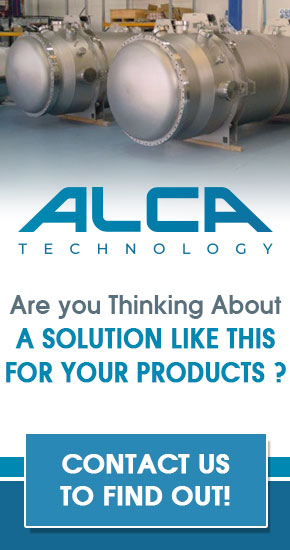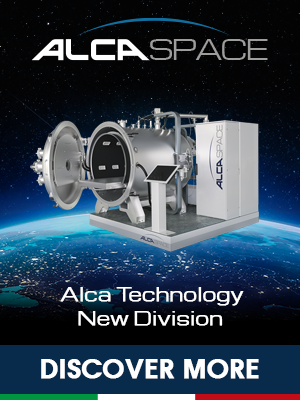Stainless Steel: Why?

If you have ever seen a machine for vacuum treatments, you will have noticed that the chamber in which the processing is carried out and a large part of the rest of the plant was made of stainless steel. The same goes for scientific instruments operating under vacuum conditions: the volume in which the operations are carried out is almost always enclosed by a stainless steel chamber.
But why, in these particular scientific and technological applications, is this material used? What are the advantages it offers (and what are the possible disadvantages)?
We can start by clarifying first when a steel can be considered stainless. As is known, steel is an iron alloy, containing more or less significant percentages of carbon, and possibly other alloy elements that are able to modify its properties, making them suitable for each application in which the material can be used.
Carbon steel, if exposed to an environment containing traces of moisture, as is known, oxidizes, forming what is commonly called rust. It is basically a spontaneous electrochemical process that tends to bring the iron contained in the alloy into its thermodynamically more stable state: oxide. Rust, in fact, often has the typical reddish brown coloration of ferric oxide (also known as Hematite). Of course, the oxidation of carbon steel - which is a problem with regard to the durability of the products made with it - can be countered in various ways: galvanizing, painting, use of sacrificial anodes, etc.
Among the various possibilities, there is a very interesting one for different industrial applications and which dates back to an invention by the British Woods and Clark, who in 1872 patented an iron alloy containing 35% by weight of chromium and acid-resistant. The industrialization of this invention, however, took place only a few decades later, when Harry Brearley of Sheffield, in 1913, during an experiment concerning firearms steels, discovered that his steel specimen with the 13- 14% chromium and with a relatively high carbon content (0.25%) did not rust when exposed to the atmosphere.
The metallurgical studies carried out to determine the origin of this relevant property led to a conclusion: the resistance to oxidation of these alloys derives from the spontaneous formation, on their surface, of a thin layer of chromium oxide, called passivating layer. The thickness of this film is very small, being normally less than 5 nm (to give an idea, equivalent to a hundred atoms), and its structure is very compact and particularly free from defects. Furthermore, in the event that this film is damaged mechanically, it has the fantastic property of regenerating spontaneously and quickly.
It is therefore a kind of perfect paint, with very high adhesion to the underlying material and self-healing capacity. Furthermore, it is highly protective with regards to corrosion phenomena. This paint is formed thanks to the oxidation of the chromium present in the alloy, which therefore acts as a sacrificial material to make the product no longer attackable by corrosion.
Another important result of the studies carried out was the determination of the minimum amount of free chromium (that is, not linked to carbon as chromium carbide) necessary for passivation to be complete and efficient: this critical threshold is around 10.5%. We can therefore say that all steels with a free chromium alloy content greater than 10.5% can be defined as stainless steels. Normally, for various reasons, it is preferable to use percentages of chromium slightly higher than the indicated value, normally between 12% and 17%.
A further discovery, the result of research carried out, concerns the fact that stainless steels are not only resistant to wet corrosion, but also, to a certain extent and up to certain temperature values, also to hot corrosion.
At this point, one might wonder why - given the exceptional properties listed above - stainless steels have not completely replaced normal carbon steels in all industrial applications. The reason is that stainless steels also have negative aspects, from an engineering point of view. Among them: a low yield point, a low thermal conductivity, greater difficulties in mechanical machining and a significant tendency, as regards fasteners, to seizure. Furthermore, the economic factor must be taken into consideration: the chromium and the other alloy elements that make up the composition of stainless steels are expensive elements, to the point of making this class of materials unsustainable from the economic point of view in many industrial applications.
In itself, the variety of available stainless steels is very wide: a first classification can be made by dividing them into austenitic (such as the well-known AISI304 and AISI316), ferritic or martensitic (for example AISI430) and duplex stainless steels. In each class, the alloys available are many and the choice must be made according to the design parameters (e.g. yield point, possibility of carrying out heat treatments, need for the material to be ferromagnetic, resistance to abrasion, thermal conductivity, etc.).
In the case of vacuum equipment, the most used class of stainless steels is undoubtedly that of austenitic steels, i.e. those which include, in alloy elements, in addition to chromium, a certain percentage of nickel, as an austenitizing and in some cases molybdenum element. This class of steels is not sensitive to heat treatments and is essentially non-magnetic. For example, the aforementioned AISI304 contains about 18% chromium and 10% nickel. Instead, the AISI316 contains 16% chromium, 11-13% nickel and 2-3% molybdenum. There are also low carbon variants of these steels (AISI304L, AISI316L), which allow welding to be carried out avoiding the depletion of free chromium caused by the formation of chromium carbides at critical temperature (phenomenon called precipitation of carbides).
The question is therefore: why are stainless steels preferred over normal carbon steels in this type of equipment? The reasons are many:
• When working in high vacuum, it is not recommended to use paints or galvanizing, due to the possible degassing phenomena related to the presence of these treatments, which, on the one hand, would increase pumping times and, on the other hand, else, they could lead to contamination of the process atmosphere.
• If the alloy used were oxidized, the iron oxide formed, being highly hydrophilic, would increase the amount of water vapor that the pumping system should manage during the baking (heating) operations of the vacuum chamber, carried out to improve the level of basic vacuum. This would inevitably lead to an increase in pumping times.
• If necessary, an unpainted structure can be easily modified and adapted, e.g. by means of welding operations.
• Being able to withstand even hot oxidation, a stainless steel chamber can be subjected to internal heating treatments, in order to improve surface cleaning, even at relatively high temperatures, without the formation of oxide (scale).
• Austenitic stainless steel is easily weldable as it does not form fragile structures (martensite) even when the cooling rate is very high. It is however important to check, in this case, that the material used is of the low carbon type, to avoid the phenomenon of sensitization. In addition, it can be easily cut with modern laser cutting systems, both CO2 and fiber, in a similar way to normal carbon steel.
Ultimately, industrial practice has taught that, in vacuum applications, the higher cost of stainless steel compared to carbon steel, is largely offset by the advantages that its use offers. For this reason, it is the most used material in this type of equipment.


